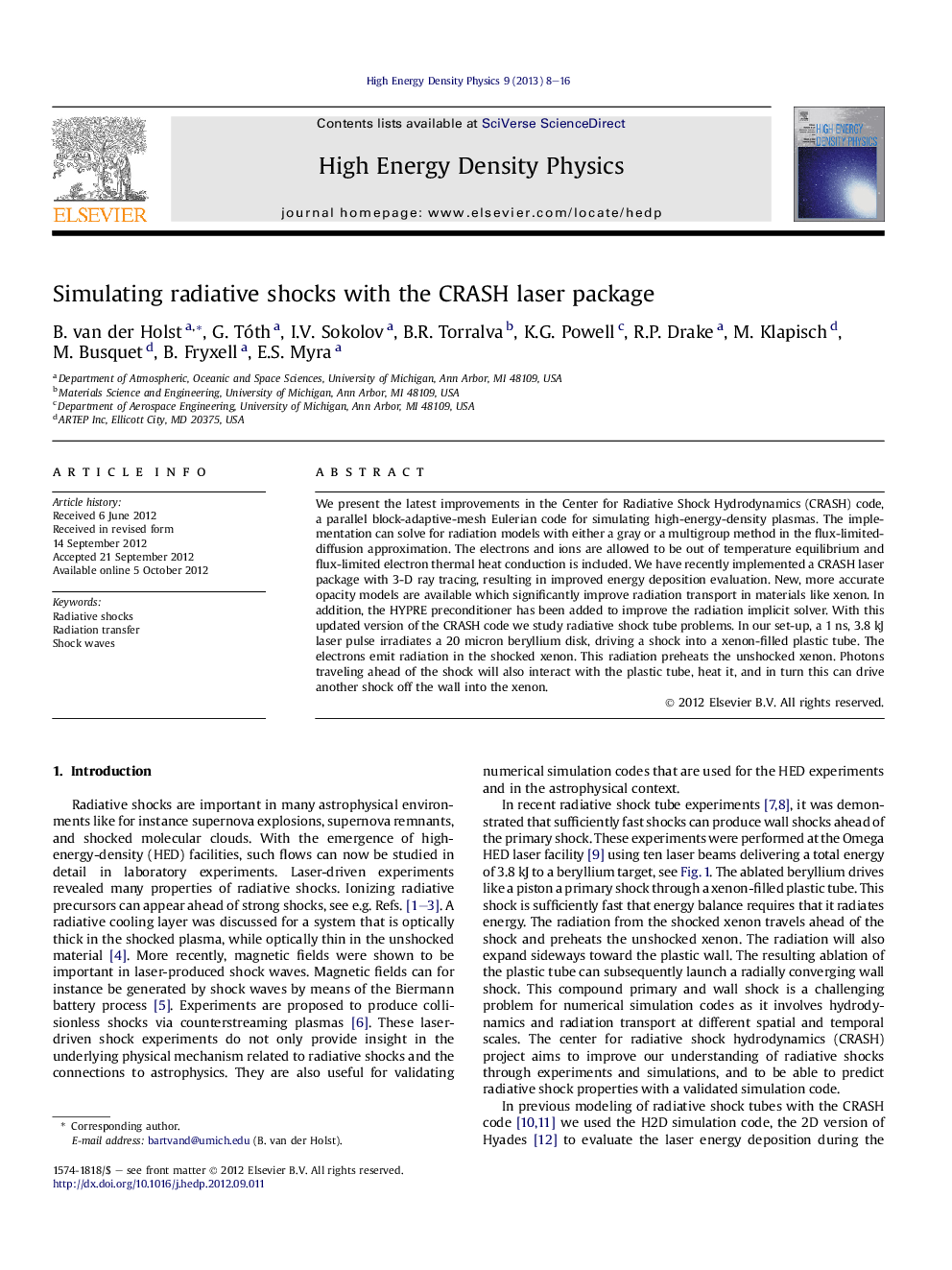| Article ID | Journal | Published Year | Pages | File Type |
|---|---|---|---|---|
| 1772496 | High Energy Density Physics | 2013 | 9 Pages |
Abstract
We present the latest improvements in the Center for Radiative Shock Hydrodynamics (CRASH) code, a parallel block-adaptive-mesh Eulerian code for simulating high-energy-density plasmas. The implementation can solve for radiation models with either a gray or a multigroup method in the flux-limited-diffusion approximation. The electrons and ions are allowed to be out of temperature equilibrium and flux-limited electron thermal heat conduction is included. We have recently implemented a CRASH laser package with 3-D ray tracing, resulting in improved energy deposition evaluation. New, more accurate opacity models are available which significantly improve radiation transport in materials like xenon. In addition, the HYPRE preconditioner has been added to improve the radiation implicit solver. With this updated version of the CRASH code we study radiative shock tube problems. In our set-up, a 1Â ns, 3.8Â kJ laser pulse irradiates a 20Â micron beryllium disk, driving a shock into a xenon-filled plastic tube. The electrons emit radiation in the shocked xenon. This radiation preheats the unshocked xenon. Photons traveling ahead of the shock will also interact with the plastic tube, heat it, and in turn this can drive another shock off the wall into the xenon.
Related Topics
Physical Sciences and Engineering
Physics and Astronomy
Astronomy and Astrophysics
Authors
B. van der Holst, G. Tóth, I.V. Sokolov, B.R. Torralva, K.G. Powell, R.P. Drake, M. Klapisch, M. Busquet, B. Fryxell, E.S. Myra,
